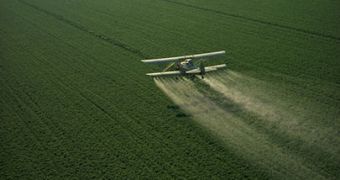Nuclear disasters are not the only man-made threats that expose people to development issues and severe health problems. In Kattuka, India, locals say pesticide spraying is responsible for the fact that half of the number of families have to take care of at least one child with disabilities.
While trying to come up with a plausible justification for this situation, doctors working in this region blame the usage of endosulfan, a chemical invented in the 1950s and spread on Indian soil by helicopters, starting two decades ago, according to the Guardian.
Even though it is now considered a thing of the past, its effects are still noticeable, since experts warn that a large amount of hazardous chemicals could still be stocked underground.
Late last year, in September, a court has decided to renew an endosulfan ban, despite a fierce resistance coming from major companies, operating in the pesticide industry. On the other hand, this decision was welcomed by local people, still concerned about the impact of this substance on their lives.
However, the legal regulation does not stop companies from selling endosulfan abroad, in remote areas where the commercialization and usage of this product hasn't been prohibited yet.
Helicopters started spraying pesticides over cashew trees, grown on agricultural land obtained after destroying forests. These trees produce caju, fruits that are sold locally and internationally.
In order to optimize production, workers had to spread endosulfan up to three times every year, impacting 60 local communities, living in the vicinity of plantations.
Since the number of disables children has rapidly increased since the 1980s, experts have linked this phenomenon to this harmful practice involving harmful chemicals.
One of the biggest concerns is that a high concentration of endosulfan in the soil could ultimately affect unborn children and give the Indians enough reasons to consider this contamination one of the most devastating man-made threats that is currently disrupting their lives and the balance of future generations.

 14 DAY TRIAL //
14 DAY TRIAL //